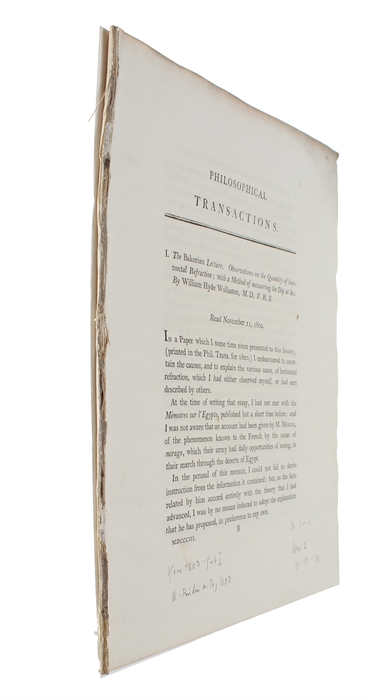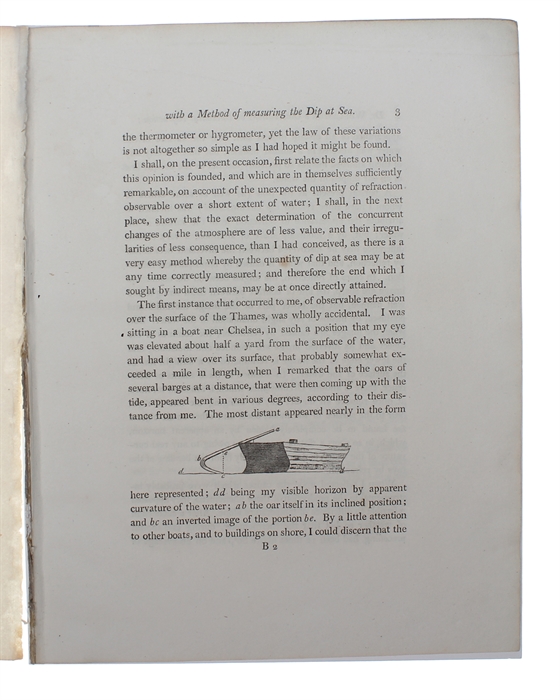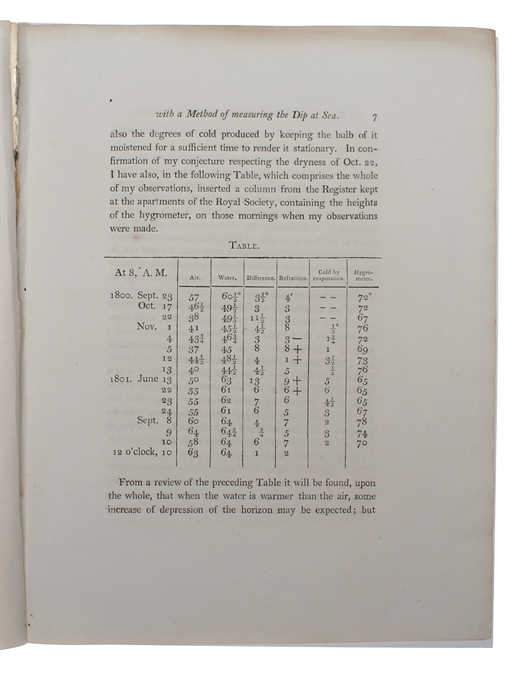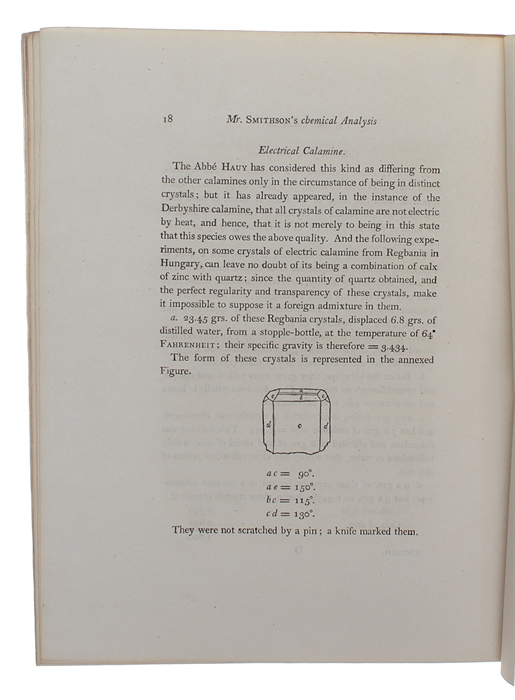WOLLASTON, WILLIAM HYDE.
The Bakerian Lecture. Observations on the Quantity of horizontal Refraction; with a Method of measuring the Dip at Sea. Read November 11, 1802.
(London, Bulwer and Co., 1803).
4to. Without wrappers as extracted from "Philosophical Transactions of the Royal Society of London." Year 1803 - Part I. Pp. 1-11, one textillustr.
First printing of an importent paper in optical physics in which he investigates refraction phenomena over surfaces of water and in the atmosphere (mirage phenomena)., relating it to temperatures of air and land. He also announced his invention of the dip sector (modified sexton) that was used by Ross and Perry while exploring the arctic region.
William Hyde Wollaston, (b. Aug. 6, 1766, d. Dec. 22, 1828), was an English chemist and physicist who discovered the elements palladium and rhodium and first reported the dark lines in the spectrum of the Sun. His consideration of geometrical arrangements of atoms led him into crystallography and the invention of the reflecting goniometer to measure angles of crystal faces. He also proved the elementary nature of niobium and titanium, developed a method of making platinum malleable, proved the identity of voltaic and frictional electricity, and invented the camera lucida to aid microscopists. The mineral Wollastonite was named in his honor. (Adventures in Cybersound).
Another paper attached: James Smithson, "A chemical Analysis of some Calamines". Pp. 12-28.
Order-nr.: 42852




